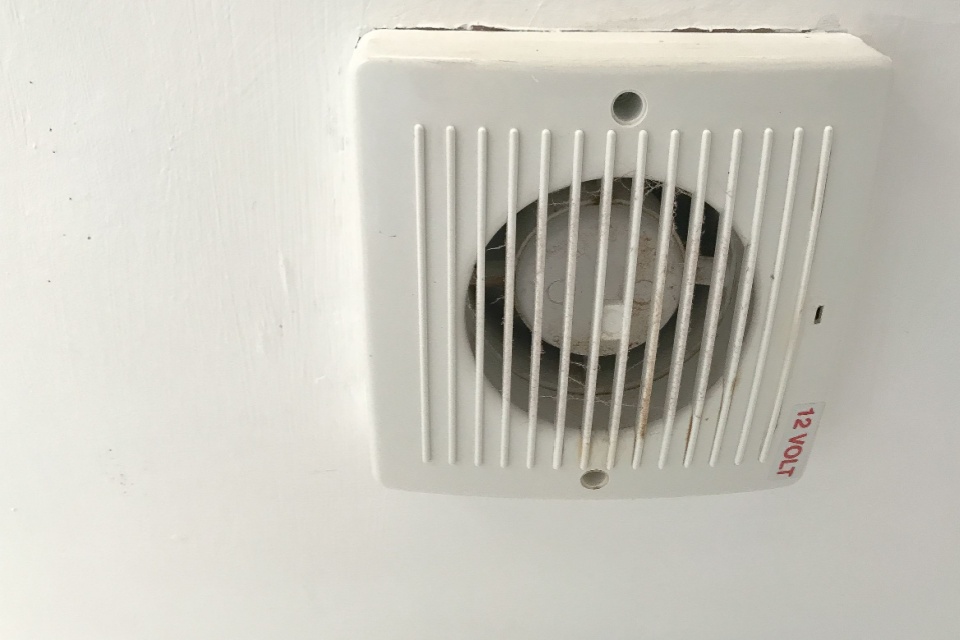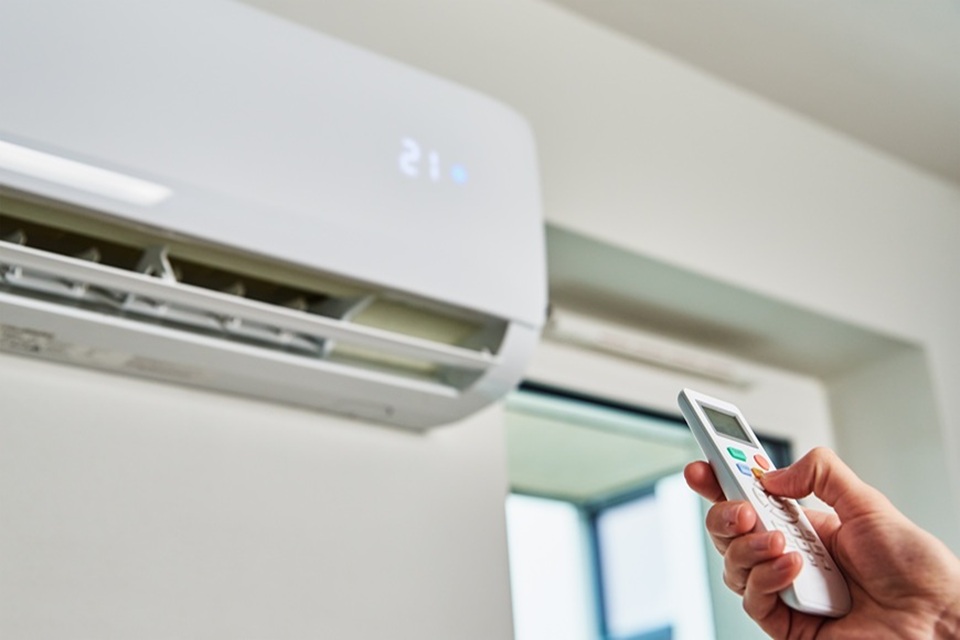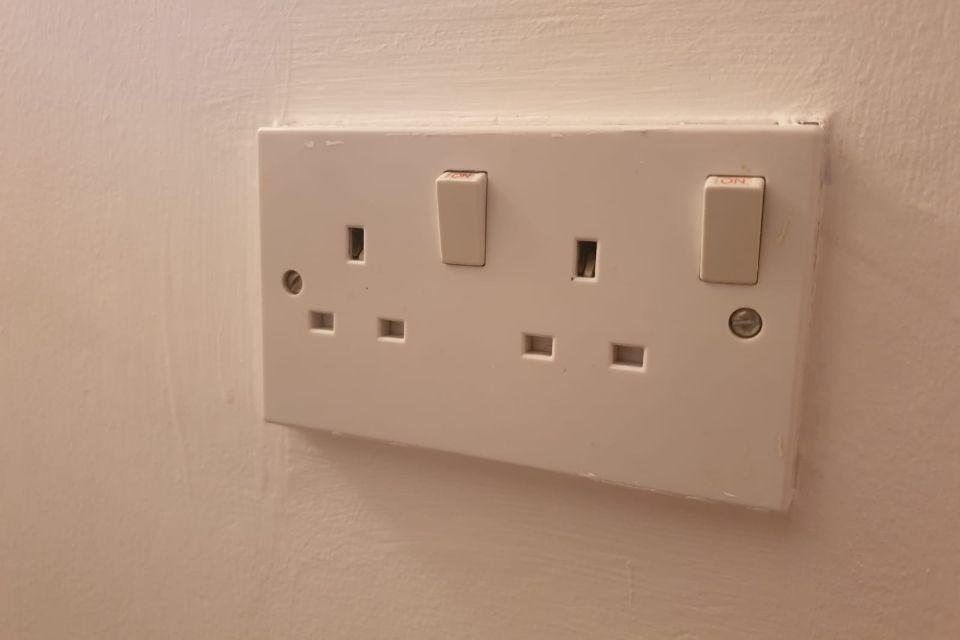Has Your Extractor Fan Stopped Working?
The following guide will look at possible reasons why an extractor fan might stop working and break down various extractor fan problems solutions. Our article will look at various possible causes such as a faulty motor or leaking extractor fan.
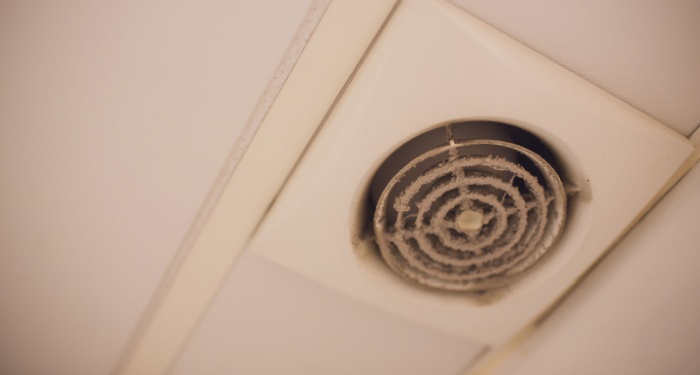
We will also explore topics such as how much it may cost to have a professional fix an extractor fan and the cost of an extractor fan replacement. You will find this article helpful if your extractor fan has stopped working or if you want to know what to do, should it malfunction in the future.
What is an Extractor Fan?
We will now discuss what an extractor fan is, how it works and several additional subtopics. An extractor fan removes moisture in the air so as to prevent a room from becoming too damp. They are also designed to exhume bad air and thus improve the overall air quality of the room.
An extractor fan extracts unwanted air particles and removes them from the house allowing fresh air to arrive instead (such as through a window), or it may recycle bad air to create fresh, high-quality air. Extractor fans are often used in kitchens and bathrooms. They are primarily used to improve the air quality of the room.
Extractor fans can also save you money by preventing harm caused by moisture and may also help to keep a room cooler on, particularly warm days. They can prevent water damage and the accumulation of bad air which can cause issues ranging from leaving a bad smell in the room to causing health problems for the household’s occupants.
Why Has My Extractor Fan Stopped Working?
In this section, we will discuss possible reasons that your extractor fan has malfunctioned. Problems that can result in a kitchen extractor fan not working properly or a bathroom fan not working well or either stopping completely include a loose connection and a faulty motor.
Fuse Needs Replacing
A blown fuse can result in a loss of power to the extractor fan. Evidence that this has happened may include that the extractor fan is failing to show any signs of power at all.
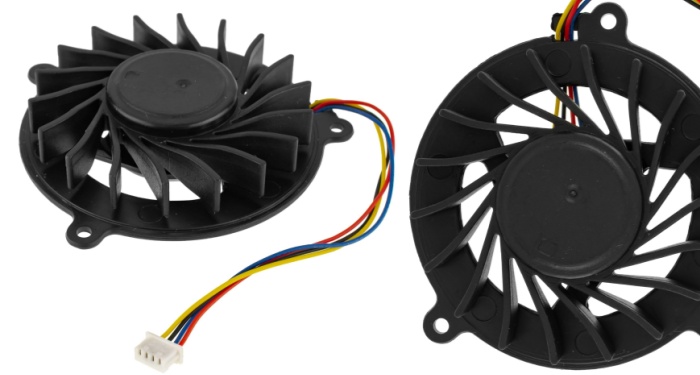
Fan Needs Cleaning
Dust may accumulate in the blades of the fan, which can cause an extractor fan to malfunction. A sign that this is the issue includes that you have yet to clean the extractor fan and the issue does not appear to be one related to the power source.
Loose Connection
A malfunctioning extractor fan might also be explained by an issue with the fan’s wiring, that which connects the motor and the switch. With time, the fan’s connections may loosen or experience issues due to rusty bolts.
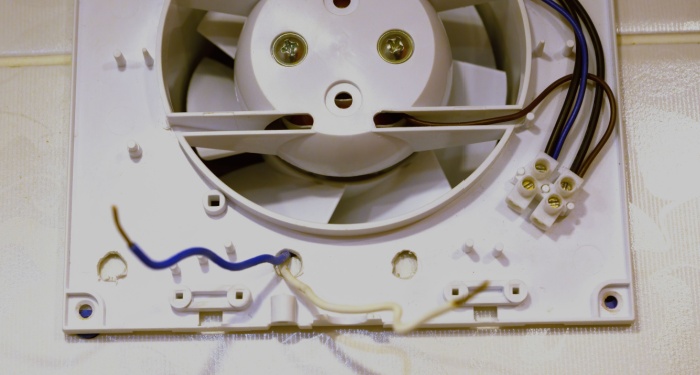
Loose connections, as with a faulty fuse, may prevent the extractor fan from turning on at all or/and may cause a trip switch to trip on various occasions.
Bends in Airflow Pipe
Another possibility is that bends in the airflow pipe are not functioning or are positioned in such a way as to reduce the air circulation capacity of the extractor fan.
If none of the other issues mentioned in this section appears to be the problem, it is possible that this is the explanation. In this case, the fan may appear to be functioning correctly but nonetheless is not circulating air correctly.
Faulty Motor
An issue with the extractor fan’s motor is another potential explanation. Motors can become worn beyond repair with time. A sign that a faulty motor is the issue at hand is if after cleaning the blades and inspecting the extractor fan’s wiring, no issue is found.
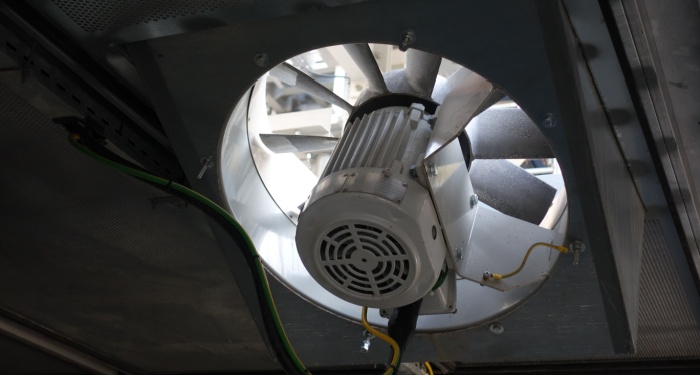
Faulty Switch
A less common issue is in relation to the extractor fan switch. Loose wiring or other issues related to wear and tear can result in a switch becoming faulty. You may find that the extractor fan won’t turn off if the switch becomes faulty while the fan is in operation.
Alternatively, a sign that a faulty switch is the problem is that there appear to be no issues with the fan blades or wiring and yet the switch fails to turn the extractor fan on.
Leaking Extractor Fan
This issue is generally caused by moisture accumulating in the air duct. Water particles may condense upon making contact with cooler air on colder days while on warmer days, particularly during the summer, humid external air may condense on pipes that have been cooled by air conditioning resulting in condensation.
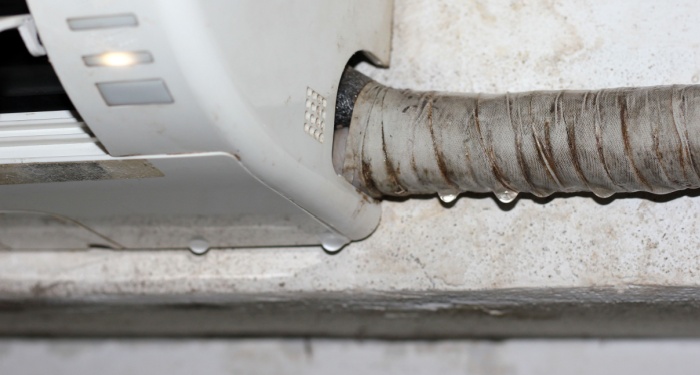
A faulty damper may be allowing this issue to occur. The damper is designed to control airflow and is located on the outside of the fan. You may discover that water is dripping from your extractor fan during use and that the extractor fan is failing to circulate air properly.
Draught Through Extractor Fan
A persistent draught coming through an extractor fan can prevent it from circulating air properly. A sign that this is the issue with your extractor fan includes that the fan itself appears to be functioning fine, but there are clear air quality issues with the room.
You may also notice the draught itself if you stand by the extractor fan or place your hand in front of the fan to feel for a draught of cool air. Ensure that you still do so from a reasonably safe distance.
How Can I Fix My Extractor Fan?
We will now look at solutions to each of the aforementioned problems. The following fixes may also be performed by a hired professional. See the next section for details regarding costs.
Fuse Needs Replacing
In order to replace a fuse, first, you’ll need to identify the fuse that has blown. To achieve this, first turn off the main power switch, cutting off the energy supply to the fuse box.
Then open up the fuse box and look for a fuse for which the metal has either melted or the glass part of the fuse seems to be discoloured or milky/foggy in appearance. Once the blown fuse has been spotted, you’ll need to find a fuse with the same amperage rating.
You could take the old fuse to a hardware store and request a replacement of the same type and make. Once the old fuse has been unscrewed, you can screw the new fuse into the socket.
When the setup is complete, turn on the main power and ensure that the circuit is working correctly. Check that your extractor fan is now working. If the new fuse also blows shortly after, then you should hire a professional to take a look at your fuse box.
Fan Needs Cleaning
If your fan needs to be cleaned, first turn off the main power source, then remove the fan cover and with a flashlight, take a look at the fan blades for debris and dust. Then employ a window cleaner and a dry cloth to wipe dust off the fan blades.
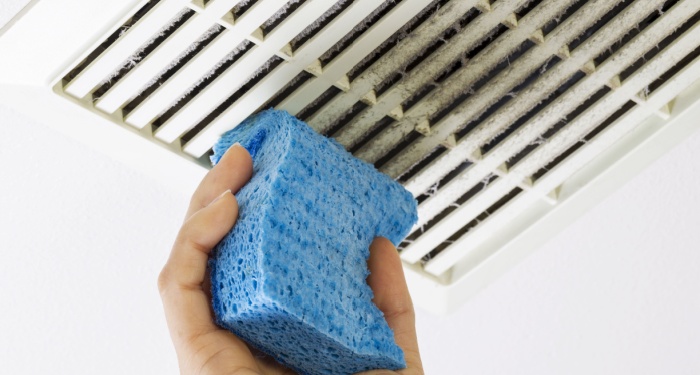
You may also utilise a cleaning brush that has hard bristles. Don’t forget to check for signs of dust and debris on the joint that sits between the motor and the blades as this region of the extractor fan often sees plenty of dust accumulate over time.
Loose Connection
To fix this issue, first, turn off the main power. Next, take a look at the wiring that is connecting the motor and the switch. If it is simply loose, then tighten the nuts by using a screwdriver. If it is not loose, check that the bolts are not especially rusty.
If they are, they may be impacting on the electrical flow from the switch to the motor. If this is the case, you should purchase new bolts and replace the old ones while the main power is switched off.
Bends in Airflow Pipe
To fix the issue of bends in an airflow pipe, you will likely need to have a professional come out and take a look. They will determine whether it is a problem with the positioning of the pipes or otherwise and perform the necessary work to fix the airflow through these pipes.
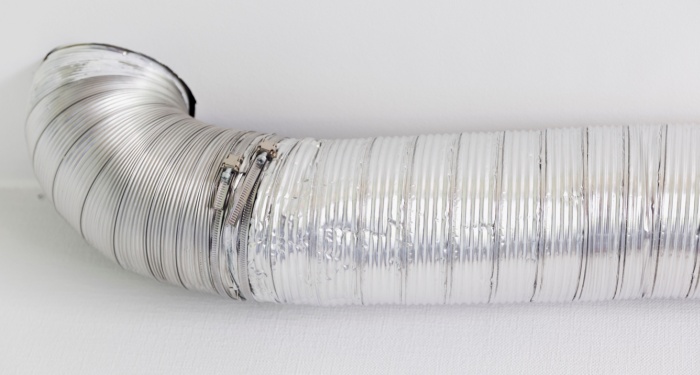
Faulty Motor
To replace a faulty motor in an extractor fan, simply turn off the main power source, remove the motor and replace it with a new and appropriate motor. You should take the old motor to a hardware store and ask for a suitable replacement.
Faulty Switch
To replace a faulty switch, first, turn off the main power supply, then unscrew the switch and replace it with a new, appropriate switch, connecting it to the socket with the power off.

Leaking Extractor Fan
In order to fix a leaking extractor fan, you’ll first need to establish whether you have a ducted or ductless fan. A ducted fan allows air from a given room to move outside through a vent while a ductless extractor fan filters the air that is sucked in before releasing the air back into the room afterwards. With either fan, you will need to turn the main power source off before removing the fan cover.
The fan cover can be removed with a screwdriver. In the case of a ducted fan, you should also identify where the extractor fan’s ducts are. They may lead to the attic or to a vent that carries air outside. You should clean the fan blades and cover with a mixture of water and soap if they are particularly dirty. In the case of a kitchen fan, if it is grease-covered, you might choose to employ an oven cleaner to do the job.
If you have a ducted extractor fan, the leakage is probably a matter of ventilation problems. The air ducts may have tears or holes that are letting moisture enter. With the fan’s cover off and the power back on, from a safe distance, look for the source of the leak. If you find one, turn the main power source back off and fix the issue by using foil tape or rubber. In the case of a ductless extractor fan, a worn, damaged or dirty filter is likely the issue.
With the main power source turned off, take off the cover of the fan and take a look at its filter. If it is damaged, it will need to be replaced. If it is not broken, water and oven cleaner may be used to clean the filter. With the filter returned to its place, turn the power back on and from a safe distance check to see whether there are still any leaks. If there are, you should hire a professional to take a look. Turn off the power again in order to put the fan’s cover back on to the extractor fan.
Draught Through Extractor Fan
An extractor fan vent back draught shutter can be used to fix this problem. It will generally need to be fitted with the spindle in the middle of the flaps aligned vertically. The ducting must be level. The exact installation requirements will vary from product to product, so make sure to follow the instructions precisely.
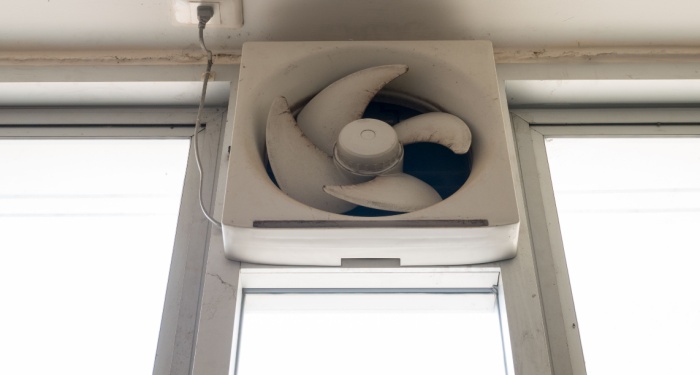
How Much Will It Cost to Fix My Extractor Fan?
For this section, we will discuss the labour costs involved in various extractor fan repair work. We will also look at how much electricians get paid per hour and per day. To have a fuse replaced is a quick job but with many electricians charging a 1 to 2 hour flat rate, you can expect the labour cost of said replacement to end up anywhere from £30 to £100.
You can expect to face a similar price tag to have a loose connection, faulty motor or faulty switch fixed. It will also cost around the same total to have a back draught shutter installed in your extractor fan. Electricians charge about £40 to £80 per hour and roughly £250 per day.
How Much is a Replacement Extractor Fan?
In some cases, your extractor fan may be beyond repair whether due to one issue that cannot be fixed or more likely, a list of accumulated issues. In this case, you will need to replace the extractor fan. It will cost about £150 to £200 to have an existing extractor fan replaced.
FAQs
Q: How long should an extractor fan stay on for?
A: On average, about 20 minutes.
Q: What is the quietest extractor fan?
A: The Silent Tornado extractor fan is an example of a particularly quiet product. It produces a mere 25 decibels.
Q: What is the best extractor fan for a shower room?
A: Some of the best shower extractor fan options are the EnviroVent Silent 100T and the Vent-Axia Silent Fan VASF100T.
Q: What is the lifetime of an extractor fan?
A: A bathroom extractor fan will probably last for about ten years while a kitchen extractor fan will probably be around for around 15 years.
Q: What is the best kitchen extractor fan?
A: Cookology BUCH900SS Cooker Hood, SIA AGE61BL and Russell Hobbs RHGCH601B are some of the top kitchen extractor fans.
Sources
- http://www.ljpratley.co.uk/blog/need-extractor-fan-bathroom
- https://www.plumbingforless.co.uk/benefits-of-installing-extractor-fans
- https://www.networx.com/article/water-drips-from-bathroom-exhaust-fan
- https://fans4less.co.uk/products/4-100mm-5-125mm-6-150mm-in-line-extractor-fan-back-draught-shutter-manrose

